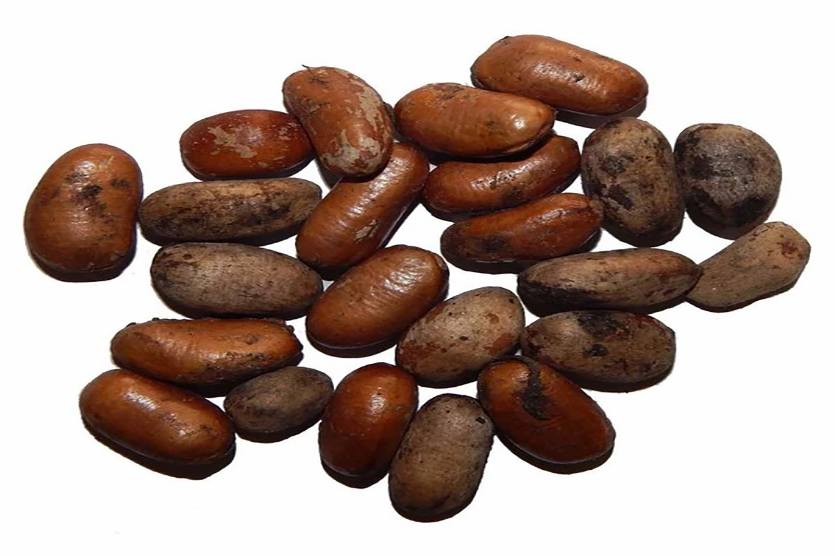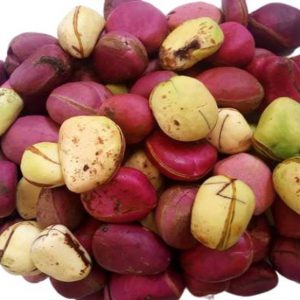African Nutmeg
It is found most commonly in the evergreen forests of West Africa and common names are African nutmeg, calabash nutmeg, and in Nigeria, it is called ehuru, ariwo, ehiri, airama. Its seed has an odour and taste that is similar to nutmeg and is used as a popular spice in the West African cuisine.
Product Name: African Nutmeg
Botanical Name: Monodora myristica
Tariff – HS Code: 0910
Local Productions: Approx 15,000 tonnes/Yrly
Quality Standards
The physical properties of African nutmeg (monodara myristica) seed at 7.56% moisture content (dry basis) were determined by employing standard methods as a prerequisite to obtaining relevant data for the design of foods, equipment, machines and systems for its processing. The major, intermediate and minor diameters of the seed ranged from 15.2-23.1 mm, 8.9-13.4 mm, and 6.5-10.9 mm respectively with 18.29, 11.07 and 9.02 as respective volume and true density were averaged as 0.89g. 0.91cm3 and 0.95 g/cm3 respectively, the bulk density was 0.13 g/cm3 resulting in a porosity of 0.86%. Against steel, wood and plastic as structural surface, the coefficients of friction were derived as 0.36, 0.45 and 0.36 respectively, while the angle of repose was found to be 21.100. Most of these physical properties had linear relationship and positive correlation with the seed weight, which co-efficient of friction on plywood was highest (0.47). The minor diameter, sphericity and true density decreased with increased seed weight.
Specifications
Package
Plastic pouches and bags.
Uses
In traditional medicine practice, especially in many African countries, the African nutmeg is widely used to relieve toothache, dysentery, dermatitis, headache and as worm expeller. So, when next you develop diarrhoea, that age-long cooking spice may be the way out.



Reviews
There are no reviews yet.